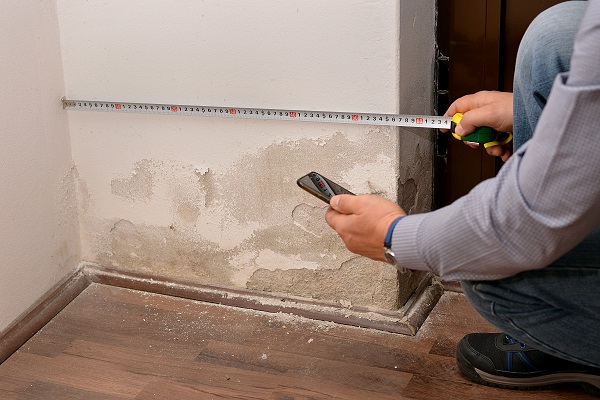
Water damage can be a homeowner’s worst nightmare, causing significant harm and leading to costly repairs. It’s a silent intruder that can seep into your home undetected, wreaking havoc on its structure and belongings. Identifying the signs of water damage early on is crucial to prevent further deterioration and protect your investment. In this comprehensive guide, we will explore the various signs that indicate water damage in your home, empowering you to take prompt action and minimize potential risks.
Understanding Water Damage
Before delving into the signs, it’s important to understand what water damage entails. Water damage refers to any harm caused by the intrusion of water into a structure, whether it’s from a leaky pipe, a roof leak, a malfunctioning appliance, or flooding. The effects of water damage can be immediate or gradual, depending on the source and duration of the water exposure.
Visible Signs of Water Damage
- Stains and Discoloration:
- Yellow or brownish stains on ceilings, walls, or floors can indicate water damage. These stains are often caused by water seeping through cracks, leaks, or damaged pipes.
- Dark patches or discoloration on carpets, especially near walls or under furniture, may be a sign of water damage.
- Peeling or Bubbling Paint and Wallpaper:
- Moisture can cause paint and wallpaper to peel, bubble, or blister. If you notice these signs, it may indicate water damage beneath the surface.
- Warped or Sagging Walls and Floors:
- Water damage can lead to structural issues, causing walls or floors to warp or sag. Bulging or uneven surfaces may be a clear indication of water infiltration.
- Mold Growth:
- Mold thrives in damp environments, making it a common consequence of water damage. Look for visible mold growth on walls, ceilings, or in hidden areas like crawl spaces.
- Musty odors often accompany mold growth, signaling the presence of excess moisture.
Indicators of Hidden Water Damage
- Damp or Musty Odors:
- Unpleasant odors, especially in enclosed spaces or specific areas of your home, can indicate hidden water damage.
- Pay attention to the smell of mold or mildew, which may be a sign of ongoing water intrusion.
- Peeling or Loose Wallpaper:
- Wallpaper that appears loose or starts peeling without an obvious cause may be a result of moisture damage behind the walls.
- Increased Water Bills:
- A sudden unexplained increase in your water bill can indicate a hidden leak. Even minor leaks, such as those in pipes or faucets, can lead to significant water damage over time.
- Sounds of Dripping or Running Water:
- If you hear the sound of water running or dripping when no faucets are turned on, it may indicate a hidden leak or pipe damage.
Inspecting Key Areas for Water Damage
- Attic and Roof:
- Inspect the attic for water stains, mold, or moisture issues. Leaks in the roof can cause extensive damage if left unaddressed.
- Look for signs of water damage around roof vents, chimneys, and skylights, as these areas are prone to leaks.
- Bathrooms and Kitchens:
- Check for signs of water damage around sinks, toilets, showers, and bathtubs. Cracked tiles, loose grout, or peeling caulk may suggest water infiltration.
- Examine cabinets and countertops for water stains or warping, as these can be indicators of hidden plumbing leaks.
- Basements and Crawl Spaces:
- Inspect these areas for signs of moisture, such as damp walls, puddles, or water stains.
- Look for efflorescence—a white, powdery substance on walls or floors—which indicates water seepage.
- Exterior Walls and Foundation:
- Check for cracks, gaps, or damage in the exterior walls and foundation. These can provide entry points for water, leading to potential water damage.
Taking Action and Mitigating Water Damage
- Fixing Leaks and Plumbing Issues:
- Promptly address any leaks or plumbing problems in your home. Repair or replace damaged pipes, faucets, or appliances to prevent further water damage.
- Ensuring Proper Drainage:
- A Pine Island Water damage restoration specialist told me to ensure your property has adequate drainage systems in place. Clean gutters and downspouts regularly to prevent water buildup and redirect water away from your home’s foundation.
- Maintaining the Roof:
- Regularly inspect and maintain your roof to identify and address any potential leaks or weaknesses before they cause water damage.
- Proper Ventilation and Humidity Control:
- Maintain proper airflow and ventilation in your home, especially in high-moisture areas like bathrooms and kitchens. Use exhaust fans or dehumidifiers to reduce humidity levels.
Conclusion
Water damage is a persistent threat that can silently undermine the integrity of your home. By being aware of the signs discussed in this guide, you can detect water damage early, enabling timely repairs and minimizing the potential risks. Regular inspections, prompt action, and preventative measures are crucial in protecting your property from the devastating effects of water damage. Stay vigilant, and remember that prevention is always better than cure when it comes to preserving your home’s value and ensuring your peace of mind.
